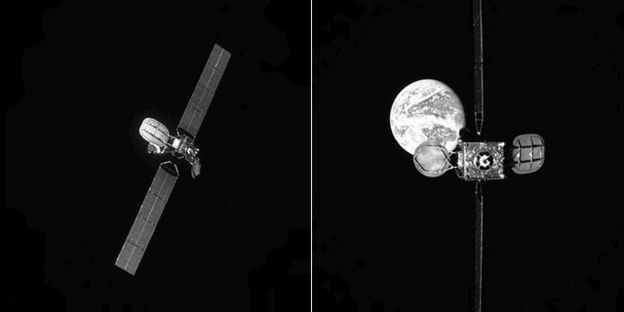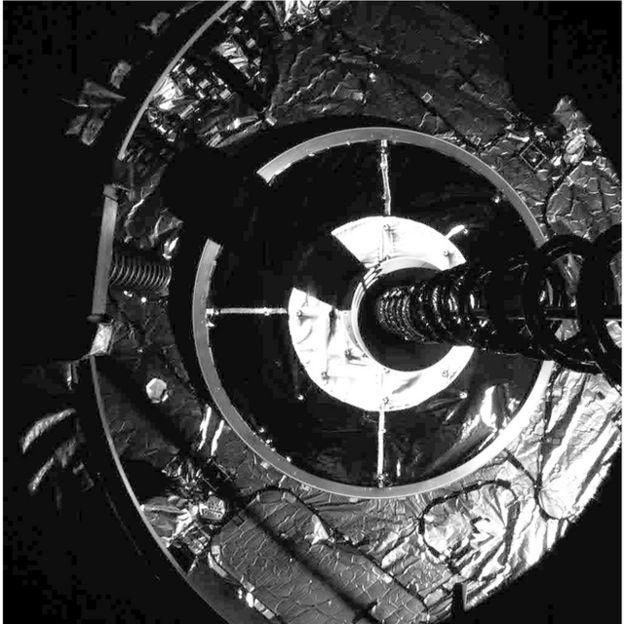Two American satellites have docked high over the Atlantic in a demonstration of what many commentators expect to be a burgeoning new industry.
One of the platforms is an old telecoms spacecraft low on fuel; the other is an auxiliary unit that will now take over all the former’s manoeuvring functions.
This will allow Intelsat-901 to extend its 19-year mission of relaying TV and other services by another five years.
The event has been described as a major accomplishment by the firms involved.
Northrop Grumman, which produced the Mission Extension Vehicle-1 that grabbed hold of Intelsat-901, said it was the first time two commercial satellites had come together in this way at an altitude of just over 36,000km.

MEV-1 will now push IS-901 to an equatorial position at 27.5 degrees West so it can resume telecoms duties in late March or early April.
The satellite industry has been talking for some time about a capability to carry out in-orbit servicing and re-fuelling of ageing spacecraft, and even to bring defunct assets out of the sky altogether. But the Northrop Grumman/Intelsat arrangement is really the first commercial initiative to
bear fruit.
The docking occurred on Tuesday at 02:15 EDT (07:15 GMT), approximately 300km above the geosynchronous arc from where most telecoms satellites relay their data.


This permitted MEV-1 to approach IS-901 with the confidence that if anything went wrong during the rendezvous procedure, no nearby operational spacecraft would be compromised.
The docking was autonomous. The MEV-1 achieved this by driving a probe into the IS-901’s engine nozzle and then opening some “fingers” to lock the two spacecraft together.
Northrop Grumman’s vehicle will now control all movement for the pair, including the precise pointing required by IS-901 to map its telecommunication beams on to the right regions of Earth’s surface.
When the Intelsat’s extended mission comes to an end, the MEV-1 will take the telecoms platform to a “graveyard” orbit before then joining up with another “running on empty” customer that needs the same manoeuvring assistance.
Northrop Grumman, which is operating its new servicing business through a subsidiary, SpaceLogistics LLC, said it planned to expand the basic “tug” concept offered by MEV-1 to include vehicles capable of in-orbit repair and assembly.
Already it is working on systems that would feature not just simple docking probes but robotic arms to grab hold of satellites. Another option being developed is fuel pods that can be attached to satellites running low on fuel.



